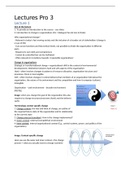Resume
Samenvatting Global Change
- Cours
- Global Change
- Établissement
- Vrije Universiteit Brussel (VUB)
Deze samenvatting omvat alle nota's en slides die gedoceerd werden door 7 verschillende gast professoren aan de 3e ba wetenschappen studenten van de VUB.
[Montrer plus]












